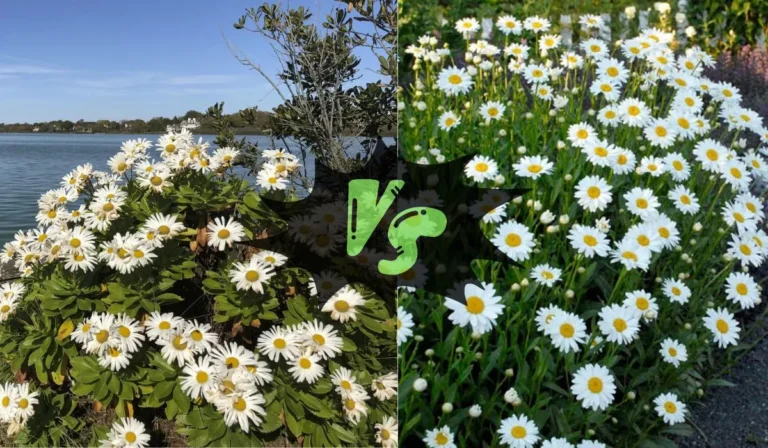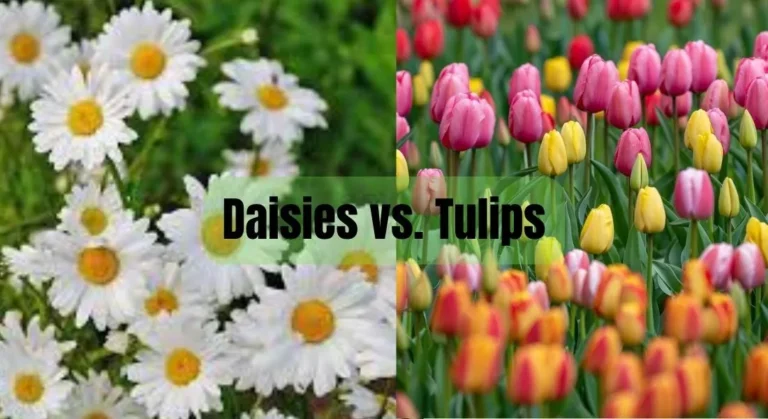Are Daisies Edible? A Friendly Guide to Eating These Cheerful Flowers
Are daisies edible? You may be surprised to learn that the answer is yes! These beautiful flowers are not just for decoration – they can also be a tasty addition to your meals. In fact, both the petals and leaves of daisies are edible and can be used in a variety of dishes.
Not only are daisies edible, but they also offer a range of health benefits. For example, they are high in antioxidants and can help boost your immune system. Additionally, daisies contain anti-inflammatory properties and can help soothe digestive issues. With all of these benefits, it’s no wonder that more and more people are starting to incorporate daisies into their diets.
If you’re interested in trying daisies for yourself, there are a few things you should know. In this article, we’ll explore the culinary uses of daisies, the health benefits of eating them, and how to safely incorporate them into your meals. So let’s get started!
Key Takeaways
- Daisies are edible and offer a range of health benefits.
- They are high in antioxidants and contain anti-inflammatory properties.
- When incorporating daisies into your diet, be sure to follow safety measures and use them in moderation.

Are Daisies Edible?
Before we jump into the kitchen, let’s address the main question: are daisies edible? The answer is a resounding yes! Both the bright yellow or white flowers and the small leaves are edible, making daisies an unexpected delight for your taste buds.
So, what do daisies taste like? I’m glad you asked! Edible daisies have a slightly spicy, bitter, and nutty flavor that can add an exciting dimension to various dishes. With such a unique taste profile, it’s no wonder that daisies have become a popular ingredient in the culinary world.
The Best Time to Harvest Edible Daisies
Now that you know daisies are edible, you’re probably eager to start picking some for your kitchen. But hold on just a moment! Timing is essential when harvesting daisies for the best taste experience. Ideally, you should pick daisies when they have just opened up or are about to do so. This is when their flavors are most vibrant and enjoyable.
To identify edible daisies, look for the classic flower shape with petals arranged around a yellow or white heart that contains small seeds. When harvesting, be sure to choose flowers that look fresh and healthy, and always make sure you have permission if picking from someone else’s property.
Ways to Enjoy Edible Daisies in Your Meals
Now for the fun part: incorporating daisies into your meals! From salads to tea, there are plenty of ways to enjoy these delightful flowers. Let’s dive into a few ideas to get you started.
1. Daisy Salads
One of the easiest ways to use daisies is by adding their leaves to a salad. The slightly bitter taste of daisy leaves pairs well with other greens and adds an extra layer of flavor to your dish. Here’s a simple recipe idea for a daisy salad:
- Combine mixed greens, daisy leaves, cherry tomatoes, cucumber, and red onion in a large bowl.
- In a separate small bowl, whisk together olive oil, lemon juice, honey, salt, and pepper.
- Drizzle the dressing over the salad and toss to combine.
- Top the salad with edible daisy flowers for a beautiful and tasty finish.
2. Daisy Tea
Feeling a bit more adventurous? Try brewing your own daisy tea! The subtle spiciness of daisies makes for a soothing and delicious beverage. Here’s how to make it:
- Gently rinse fresh daisy flowers and leaves to remove any dirt or debris.
- In a teapot, combine 1 cup of fresh daisies with 4 cups of boiling water.
- Allow the daisies to steep for 10-15 minutes.
- Strain the tea into cups, discarding the daisies.
- Sweeten with honey or sugar, if desired, and enjoy your homemade daisy tea!
3. Other Culinary Uses for Daisies
Looking for more ways to incorporate daises into your dishes? The sky’s the limit! Here are a few more creative ideas to inspire your culinary adventures:
- Daisy-infused honey: Add fresh daisy flowers to a jar of honey, ensuring they are fully submerged. Allow the mixture to sit for a few weeks, then strain out the flowers. Use your daisy-infused honey to sweeten tea, drizzle over yogurt or toast, or incorporate into salad dressings.
- Daisy garnish: Add a pop of color and a touch of whimsy to your dishes by using fresh daisy flowers as a garnish. They make a lovely addition to cakes, fruit salads, or even cocktails!
- Daisy butter: Soften unsalted butter and mix in finely chopped daisy flowers and leaves for a unique and flavorful spread. Use it on bread, in sandwiches, or to add an extra burst of flavor to your cooked vegetables.
- Daisy-stuffed pasta: For a truly unique dish, create daisy-stuffed pasta by combining fresh daisy flowers and leaves with ricotta cheese, egg, and seasonings. Stuff the mixture into your favorite pasta, such as ravioli or tortellini, and cook as desired.
By incorporating daisies into your cooking, you’ll not only enjoy their unique flavors, but also impress your friends and family with your culinary creativity!
Health Benefits of Eating Daisies
If you are looking for a new food to add to your diet, daisies might be worth considering. Not only are they pretty to look at, but they also offer a range of health benefits.
Nutritional Value
Daisies are a good source of vitamins and minerals. Here is a breakdown of their nutritional value per 100 grams:
| Nutrient | Amount |
|---|---|
| Calories | 23 |
| Protein | 2.5 g |
| Carbohydrates | 4.5 g |
| Fiber | 1.5 g |
| Fat | 0.5 g |
| Vitamin A | 1540 IU |
| Vitamin C | 23 mg |
| Calcium | 110 mg |
| Iron | 2.2 mg |
As you can see, daisies are low in calories and fat but high in protein, fiber, and vitamin A. They are also a good source of vitamin C, calcium, and iron.
Medicinal Properties
Daisies have been used for centuries as a natural remedy for various ailments. Here are some of their medicinal properties:
- Anti-inflammatory: Daisies contain compounds that can help reduce inflammation in the body, making them useful for treating conditions such as arthritis and asthma.
- Digestive aid: Daisies can help improve digestion and relieve symptoms such as bloating and constipation.
- Immune booster: Daisies contain antioxidants that can help boost the immune system and protect against disease.
- Skin care: Daisies have anti-inflammatory and antibacterial properties that make them useful for treating skin conditions such as acne and eczema.
It is important to note that while daisies do offer health benefits, they should not be used as a substitute for medical treatment. If you have a medical condition, please consult your doctor before adding daisies to your diet.
Safety Measures to Consider
When foraging for daisies, it is important to take certain safety measures to ensure that you are not putting yourself at risk. Here are some things to consider:
Proper Identification
The first and most important step to take when foraging for daisies is to properly identify the plant. Daisy plants can look similar to other plants in the Asteraceae family, such as chamomile or yarrow, so it is important to know what you are looking for.
Make sure to research the plant thoroughly and only harvest daisies that match the description.
Avoid Pesticides and Polluted Areas
When foraging for daisies, it is important to avoid areas that may have been sprayed with pesticides or herbicides. These chemicals can be harmful if ingested. Additionally, avoid areas that may be polluted, such as roadsides or industrial areas, as the daisies may absorb toxins from the soil.
Know Your Allergies
If you have allergies to other plants in the Asteraceae family, such as ragweed or chrysanthemums, you may also be allergic to daisies. It is important to know your allergies and avoid consuming any plants that may trigger an allergic reaction.
Moderation is Key
While daisies are generally considered safe to eat in moderation, it is important to not overdo it. Consuming large amounts of daisies can cause digestive issues such as nausea, vomiting, and diarrhea.
Stick to a few petals or leaves at a time and do not consume more than three cups of daisy tea per day.
Frequently Asked Questions (FAQs)
Are all daisies edible?
While many varieties of daisies are edible, it’s essential to correctly identify the daisies you plan to eat. If you’re unsure, consult an expert or use a reliable guidebook to confirm their edibility.
Can daisies be eaten raw or cooked?
Daisies can be eaten both raw and cooked. Raw daisies add a vibrant touch to salads and other cold dishes, while cooked daisies can be used in pasta, soups, or even sautéed as a side dish.
Are there any potential side effects or allergens to be aware of?
Although daisies are generally considered safe to eat, some individuals may be allergic or sensitive to them. If you’re unsure, try a small amount first to check for any adverse reactions.
How should daisies be stored for optimal freshness?
To keep your daisies fresh, store them in a cool, dry place away from direct sunlight. You can also place them in a sealed container with a damp paper towel to help retain moisture.
Conclusion
In conclusion, daisies are more than just a pretty face; they’re a versatile and flavorful addition to your culinary repertoire. With their unique taste and numerous ways to incorporate them into your meals, daisies are a delightful ingredient that can elevate your dishes to new heights.
So, why not step out of your comfort zone and give daisies a try? You might just discover a new favorite ingredient that adds a touch of magic to your kitchen creations.
Happy cooking, and remember – sometimes the most surprising ingredients can lead to the most memorable meals!
Related Posts:




